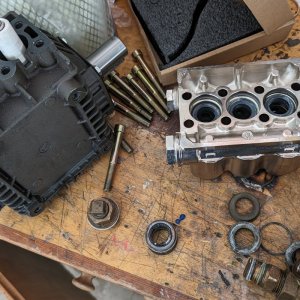Jim can you go into detail... Over, under or random application, not grooming, dispersing in the product etc. Applying a solvent on wet furniture or water based on dry furniture?
1. Follow the Product Manufacturer's Directions for application rate, recommended applicator, and safety.
2. When applying protector to new fabric, test the product in an inconspicous area. Bleeding rarely happens (but it has....you will be protecting some weird stuff if you are working with designers Mikey..but you know that I'm sure), but some color change (usually an overall slight darkening) has happened enough to cause damage claims. People forget what a dirty fabric looked like when it was new, but on brand new fabrics, they might detect it.
You probably will never have a problem with this, but I look both ways when crossing a one way street.
3. When applying protector to fabrics that appear to be clean (relatively new or unused), make sure you vacuum it well first anyway. Light soiling that is otherwise invisible will sometimes migrate to create water marks when the fabric dries. I like spraying "clean" fabric like this with distilled water first to further assist water based protector to level out after you've applied it.
Try as you will, and no matter what sprayer you use, its a challenge to apply protector evenly over contoured surfaces.
4. If you clean the fabric first, it should be as dry and residue free as possible before you apply the protector. A little moisture is good (see point 3), but fabrics that are very wet will dilute the protector, and the extra water from the protector can create problems associated with overwetting (browning, bleeding, odors from microbial growth, water marks, etc)
5. Fabrics with a texture (chenille and velvet as examples) should be groomed after you apply protector. Note that some delicate natural fiber fabrics may have a change of hand after applying water based protector, so groom accordingly.





